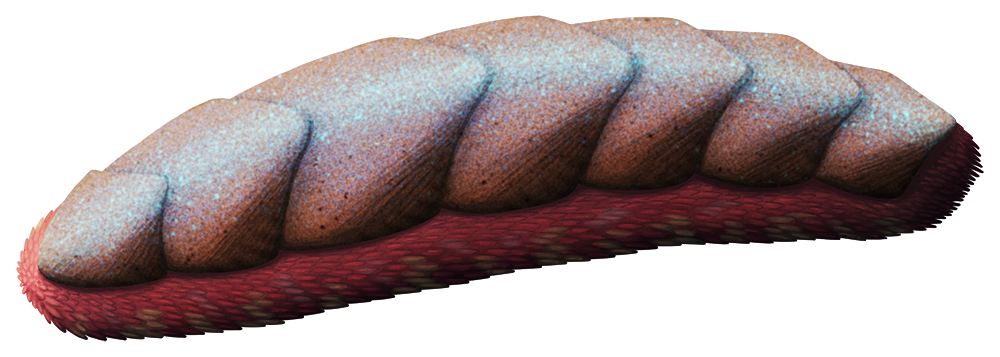Much like Odontogriphus and Wiwaxia, the evolutionary relationships of a group called the halkieriids have been debated for a long time. These animals looked like “slugs in chain mail“, covered in thousands of tiny overlapping mineralized armor plates along with a larger shell plate at each end.
In the past they’ve been assigned to different parts of the lophotrochozoan family tree, sometimes being placed closer to annelids or brachiopods, but at this point they’re generally accepted to be molluscs. The spiny species Orthrozanclus may link halkieriids with wiwaxiids in a larger “halwaxiid” lineage of early molluscs – or they might instead be early members of a group called aculiferans.
Aculiferans are represented in modern times by chitons and aplacophorans, and they’re distinguished from all other molluscs by having either eight shell valves (chitons) or no shell at all and a worm-like body covered with tiny calcareous spines (aplacophorans).
(Also chitons are especially weird, with magnetite teeth and thousands of eyes in their armor plates.)
A related fossil species called Calvapilosa kroegeri from the early Ordovician of Morocco (~480 million years ago) seems to link halkieriids with aculiferans, placing the chain-mail-slugs as a stem lineage close to the common ancestor of modern forms.
Continue reading “Cambrian Explosion Month #24: Phylum Mollusca – Coats of Mail”
